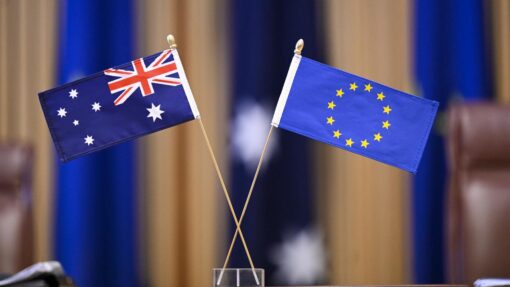A lobster in every pot at Christmas and the New Year
Poppy Johnston |

Australian lobster fishers are confident they can ramp up supply in time for Lunar New Year once trade restrictions with China are finally lifted.
China will resume importing Australian live lobsters by the end of 2024 after a years-long trade dispute between the two nations, in a win for local producers locked out of their largest export market.
The vast majority of Australian rock lobster exports, worth more than $700 million, went to China in 2019.
South Australian lobster fisher Kyri Toumazos described Thursday’s announcement, brokered on the sidelines of the ASEAN summit on Thursday, as a “massive positive”.
Realistically, Mr Toumazos said re-engaging with the Chinese market would be a gradual process but he was “very comfortable” working with the timeline and process outlined by the federal government.
He assured domestic consumers, who supported the industry throughout the four-year export ban, would still be able to source lobster for their Christmas tables.

“As an industry, we’re going to ensure that they have a valuable product at an affordable level,” he told AAP.
Prime Minister Anthony Albanese and Chinese Premier Li Qiang agreed the embargo would be lifted by the end of 2024 at the summit in Laos on Thursday.
The federal government said it would save the jobs of 3000 workers in the commercial fishing industry.
China first imposed the trade sanctions in 2020 in retaliation to then-prime minister Scott Morrison calling for an inquiry into the COVID-19 pandemic.
Tariffs on Australian products such as barley and coal were also enforced but University of Adelaide trade expert Nathan Gray said restrictions hit the lobster industry hard as diversifying into other markets was more difficult.
Volumes demanded by Japan and Singapore failed to match the scale of China, with the Chinese market also prepared to pay more per kilo.
As a result, lobster harvesters have not been catching as much as they could, making it difficult to keep businesses afloat and workers employed.
Despite the pressures of the past few years – compounded by high fuel prices and other costs of doing business, Dr Gray was confident the industry would be able to ramp up to meet demand as it started to coming through from Chinese buyers.
Yet after the usual spike in late January and early February to coincide with Chinese New Year, he warned troubling economic conditions could keep a lid on demand as only the wealthy would be able to afford luxury products.
Dr Gray applauded the Australian government’s role in repairing the relationship and lifting trade restrictions.
But those diplomatic channels would need to be kept open, he cautioned.
“We should give the government credit… how long it stays and what we have to do to maintain it is another matter entirely,” he told AAP.

Trade Minister Don Farrell said lifting the total $20 billion worth of trade impediments would lead to greater prosperity for Australian producers and more jobs.
“But we’re not going to rest on our laurels,” he told reporters on Friday, highlighting the importance of continuing to diversify and build trade partnerships around the world.
Senator Farrell said Australia had devised a “way forward” through Chinese biosecurity demands for more monitoring and testing.
“What you’ll see … is a gradual resumption of exports of Australian rock lobster into China that will meet all of the requirements of the Chinese government,” he said.
AAP


